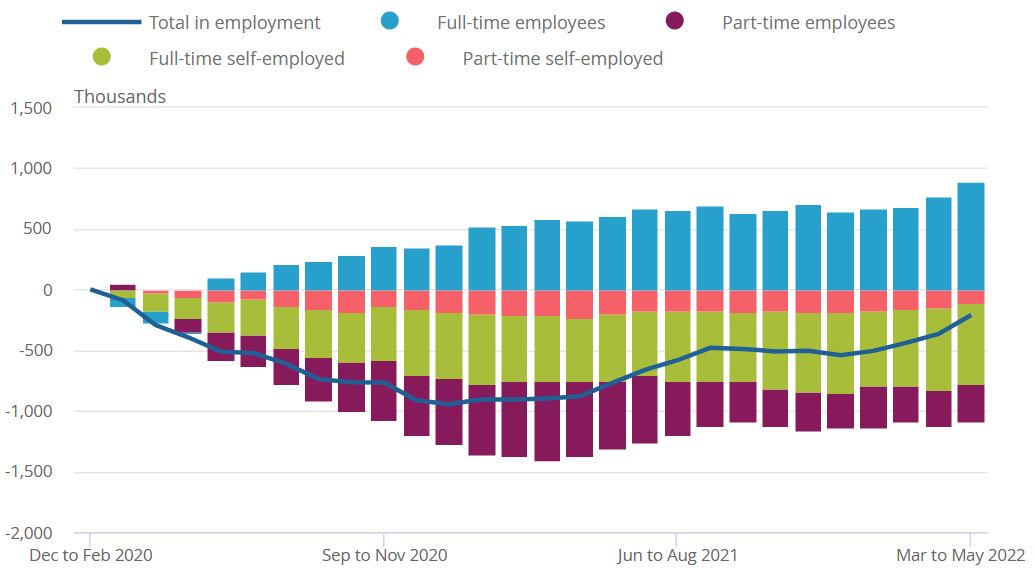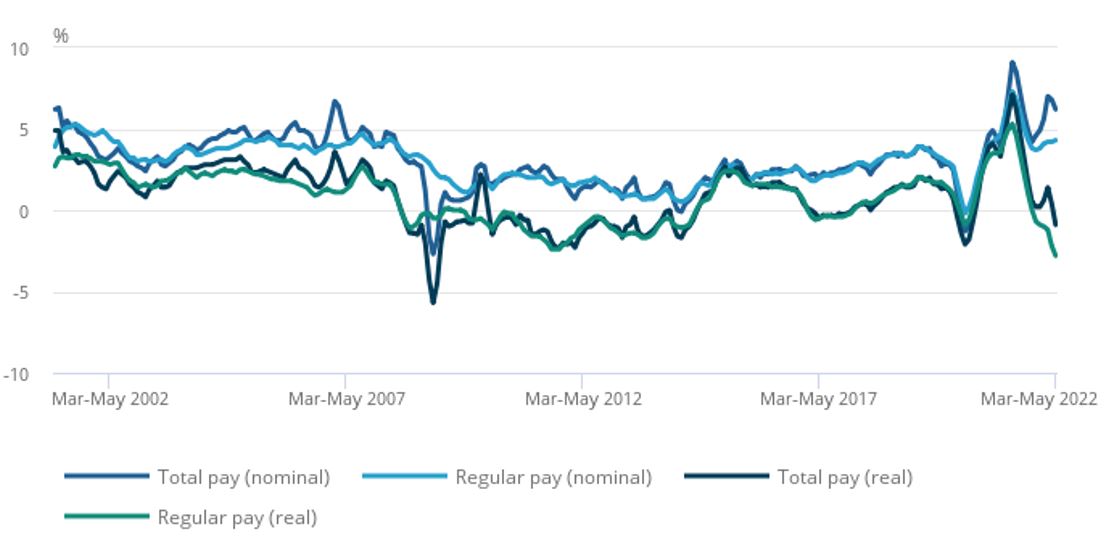ONS Labour Market July 2022
Vacancies at near-record high
- The number of job vacancies in April to June 2022 was 1,294,000 – close to the record high between March and May.
- The total number of vacancies was 498,400 (62.6%) above the January to March 2020 pre-pandemic level.
- The rate of growth in vacancies slowed for an 11th consecutive period to 0.5%.
- Accommodation and food service activities showed the largest increase at 10,200 vacancies. However, such gains were offset by falls in other industry sectors, particularly wholesale and retail trade; repair of motor vehicles and motorcycles, which fell by 7,200.
Hospitality drives payroll employee growth
- Early payroll estimates for June show the number of payrolled employees rose by 874,000 employees (3.0% YoY) to 29.6 million. This is up 561,000 on the pre-Covid level, with the number of payrolled employees up by 1.9% since February 2020.
- The largest yearly increase in payrolled employees continued to be in accommodation and food services (a rise of 163,000 employees), while the smallest remained in the construction sector (a fall of 7,000).
Unemployment below pre-Covid rate at 3.8%
- The unemployment rate for March to May decreased by 0.1pp on the quarter to 3.8%. This was 0.2pp below pre-pandemic levels.
- The economic inactivity rate decreased by 0.4pp to 21.1% in March to May 2022. The decrease in economic inactivity was largely driven by those previously inactive because they were looking after family/home, students or long-term sick.
New record high full-time employees
- The employment rate increased by 0.4pp on the quarter to 75.9% between March and May, but is 0.7pp below pre-pandemic levels.
- The number of full-time employees increased over the quarter to a record high. Part-time employees also increased during the latest period, continuing to show a recovery from the large falls in the early stages of the coronavirus pandemic.
UK employees and self-employed workers, full-time and part-time, (people aged 16 years and over), seasonally adjusted, cumulative change from December 2019 to February 2020, for each period up to March to May 2022

Source: Office for National Statistics
Rise in hours worked
- Total actual weekly hours worked increased by 6.5 million hours compared with the previous quarter to 1.05 billion hours in March to May.
- This is still 6.4 million below pre-pandemic levels (December 2019 to February 2020). But total actual weekly hours worked by women exceed pre-coronavirus pandemic levels and are at a record high.
Inflation outpaces earnings
Both annual total and regular pay growth lagged inflation in the three months to May.
- In nominal terms, average regular pay (excluding bonuses) for employees in Great Britain was £565 per week before tax and other deductions from pay – up from £540 per week a year earlier.
- Average total pay (including bonuses) for employees in Great Britain was £601 per week before tax and other deductions from pay – up from £578 per week a year earlier.
- Regular and total pay growth rose by 4.3% and 6.2% respectively in the three months to May compared to a year earlier.
- Average total pay growth for the private sector was 7.2% in March to May 2022, and for the public sector it was 1.5%. The finance and business services sector and construction sector showed the largest growth rates at 8.2% and 8.1%, respectively, partly because of strong bonus payments.
- In real terms (adjusted for inflation), total pay declined by 0.9% in the three months to May, while regular pay declined by a record 2.8% over the period.
Average weekly earnings annual growth rates in Great Britain, seasonally adjusted, January to March 2001 to March to May 2022

Source: ONS
Back to Retail Economic News